how to patch test skincare: safe, step-by-step guide
Patch testing is a gentle, smart way to try new skincare—especially if your skin is easily overwhelmed. When you test a discreet spot first, you respect your barrier and give yourself time to notice redness, stinging, or itchiness before committing. This slow, thoughtful approach helps reactive and sensitive skin feel safe while you explore new formulas and actives at your own pace.
Why Patch (Spot) Testing Is a Good Idea
- Prevents full-face flare-ups: A tiny test area is safer than discovering a reaction after applying product everywhere.
- Catches delayed reactions: Some sensitivities (allergic contact dermatitis) take 24–48 hours to show.
- Helps identify triggers: Fragrance, essential oils, certain preservatives, acids, and retinoids are common culprits.
- Builds skin confidence: Learn what your skin loves—and what it doesn’t—so you can expand your routine without fear.
If your skin is already irritated, sunburned, or barrier-compromised, wait until it calms before you test anything new.
Where To Patch Test Skincare
- Behind the ear (retroauricular area): low visibility, similar sensitivity to facial skin.
- Along the jawline: great for everyday serums and moisturizers.
- Inner forearm: useful for body products; less perfect for facial actives but still helpful.
How To Patch Test (Step-by-Step)
- Clean & dry the area. Skip toner or moisturizer on the test spot.
- Apply a pea-size amount of the new product to a 1–2 inch area.
- Leave it on (for leave-ons) or follow the exact directions (for rinse-offs).
- Wait 24–48 hours. Avoid washing the test area if the product is meant to stay on.
- Watch for signs of irritation: redness, stinging, itching, warmth, hives, bumps, swelling, or new dryness/flaking.
- No reaction? Try the product on a larger facial area for 2–3 days before full-face use.
- Reaction? Rinse with cool water, stop using, and soothe with a bland, fragrance-free moisturizer.
Severe symptoms like significant swelling, blistering, or trouble breathing need immediate medical care.
How Long Should You Patch Test?
- Basic products (hydrators, gentle cleansers, simple moisturizers): 24 hours may be enough.
- Actives (retinoids, vitamin C, AHA/BHA): aim for 48 hours and consider two applications 24 hours apart to check for cumulative irritation.
- Fragranced or essential-oil-heavy formulas: treat like actives—go slower.
What Your Results Mean
- No symptoms at 48 hours: low immediate-irritation risk. Introduce to a small facial area for several days before full-face.
- Mild, brief tingling: some actives tingle initially. If tingling resolves quickly without redness, proceed slowly.
- Persistent redness, burning, itching, bumps, delayed rash: consider the product a no for now—your barrier may be signaling that the formula is too strong or includes a personal trigger.
Special Notes for Common Actives
Retinoids (retinol, retinal, tretinoin)
Patch test 48 hours. Start 2–3 nights per week, sandwich with moisturizer, and avoid pairing with strong exfoliants at first.
Acids (AHA/BHA/PHAs)
Patch test 48 hours. Introduce 1–3 times per week and watch for cumulative dryness or tightness.
Vitamin C (especially L-ascorbic acid)
Patch test 48 hours. If you’re reactive, try gentler forms (e.g., sodium ascorbyl phosphate) and avoid layering with other strong actives initially.
If You Have Very Sensitive Skin
Keep it simple: gentle cleanser + soothing moisturizer + mineral SPF. Introduce one new product at a time and give each at least a week before adding another. Choose barrier-supportive formulas with aloe, ceramides, oat, glycerin, and hyaluronic acid.
Explore the Sensitive Collection
Kind Reminder From Our Estheticians
Your skin’s job is to protect you. When it speaks up, listen. Patch testing isn’t about being fearful—it’s about being gentle and smart with the organ you live in every day.
FAQs
How do you patch test skincare?
Apply a pea-size amount to a discreet area (behind the ear or jawline), leave on, and monitor for 24–48 hours.
Where should I patch test new products?
Behind the ear or along the jawline for face products; inner forearm for body products.
How long should I wait after a patch test?
Wait 24–48 hours. For actives like retinoids or acids, extend to 48 hours and consider two applications to check cumulative irritation.
What if I react during the patch test?
Rinse, stop using the product, and soothe with a bland, fragrance-free moisturizer. Seek medical care for severe symptoms.
Can I patch test multiple new products at once?
It’s best to test one product at a time so you can identify the cause of any reaction.
Ready to rebuild trust with your skin?
Start with calming, barrier-first formulas curated by the estheticians at ästhetik spa & skincare.
Explore the Sensitive Collection

